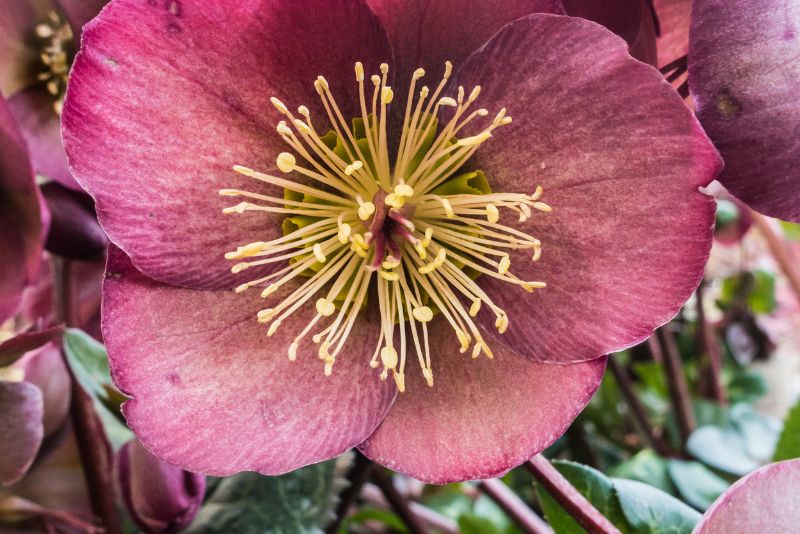How to Propagate Hellebores: A Gardener’s Guide
Hellebores are the jewels of the winter garden, with their delicate, cup-shaped flowers that brighten the coldest days. Whether you’re a seasoned gardener or just discovering the wonder of these perennial beauties, learning to propagate hellebores can be a rewarding, albeit patient, endeavor. In this comprehensive guide, we’ll take you through the art of hellebore propagation, sharing in-depth methods, best practices, and tips garnered from seasoned experts and gardening enthusiasts.
Understanding Hellebores

What Are Hellebores?
Known scientifically as Helleborus, hellebores belong to the Ranunculaceae family and include several species that are treasured for their evergreen foliage and robust flowers, including the Lenten Rose (H. orientalis) and the Christmas Rose (H. niger).
Popular Varieties and Characteristics
The Helleborus genus boasts an array of species and hybrids that offer a spectrum of colors and growth habits. Some popular varieties include:
- H. x hybridus: A highly variable hybrid offering a range of colors and flower forms.
- H. argutifolius: Also called the Corsican Hellebore, known for its giant, pale green flowers.
- H. foetidus: Nicknamed “Stinking Hellebore,” this variety has finely cut, dark green foliage.
Understanding the unique attributes of hellebores will help you select the best candidates for propagation.
Methods of Propagation
Hellebores can be propagated through different methods, each suited to certain times of the year and circumstances.
Division
The simplest and most common method, division, involves separating the plant’s clumps into several pieces, each with its own roots.
Seed Sowing
Hellebores are also easily grown from seed, but this method requires patience as they can take several years to mature and bloom.
Although more challenging than the other methods, stem cutting propagation can result in faster blooming than seed sowing.
Best Practices for Propagation
To ensure a high success rate, there are certain practices you should adhere to when propagating hellebores.
Timing and Conditions
For division and seed sowing, timing is crucial. Aim to divide plants in the spring before new growth appears, and sow seeds as soon as they ripen. Stem cuttings are best taken in early summer when the plant is actively growing.
Tools and Materials
You’ll need a few basic tools, but most important is a sharp, clean knife or pair of pruners.
Step-by-Step Guide for Each Propagation Method
Division
- Select a mature, healthy plant for division.
- In early spring, dig up the plant, taking care to retain as much of the root system as possible.
- With your knife or pruners, divide the clump into sections, ensuring each has at least one or two growth buds and healthy roots.
- Replant the divisions at the same depth as the mother plant in a prepared site with well-draining soil.
Seed Sowing
- Harvest the seeds as soon as the pods crack open and sow them immediately in rich, well-draining soil.
- Sow the seeds just beneath the surface and water gently.
- Keep the soil consistently moist and ideally between 60-70°F (15-21°C).
- Germination can take several months, and the young plants should be kept in a protected, shaded area until they are established.
Stem Cuttings
- Select a stem without a flower and cut the stem just below a leaf node.
- Remove the lower leaves and flower buds, leaving just a few leaves at the top of the cutting.
- Dip the cutting in a rooting hormone and plant it in a small pot filled with a sterile, well-draining growing medium.
- Water the cutting well and place it in a warm location with indirect light.
- Keep the soil consistently moist and watch for new growth as a sign that the cutting has rooted.
Tips for Success
While propagating hellebores, keep these tips in mind to avoid common pitfalls.
Common Mistakes to Avoid
- Over-dividing plants can stress them, so be sure each division is substantial enough to thrive.
- Avoid sowing seeds too deeply as this can hinder germination.
- When taking stem cuttings, ensure the cut is clean and not crushed, which can reduce the cutting’s ability to take up water and nutrients.
Troubleshooting Propagation Issues
- If your divisions or cuttings wilt, provide shade and adequate moisture until they recover.
- Seeds may not germinate if they dry out, so keep the soil consistently moist but not waterlogged.
By being aware of these pitfalls, you’ll be better equipped to troubleshoot issues should they arise.
Conclusion
Efforts to propagate hellebores are often met with tremendous rewards, not just in multiplying these lovely plants, but in the joy of engaging with the gardening process on a deeper level. This guide is just the beginning of your hellebore propagation journey. With patience, knowledge, and a bit of trial and error, you can expand your garden, share the beauty of hellebores with others, and cherish the process of cultivation.
In our concluding thoughts, we encourage you to document your hellebore propagation experiences. Whether your record consists of successes or the occasional learning curve, each entry will serve as a valuable reference for future propagation efforts. Share your progress with the community, and in doing so, you’ll not only enrich your personal gardening story but contribute to the collective knowledge of hellebore enthusiasts worldwide. Happy propagating!






